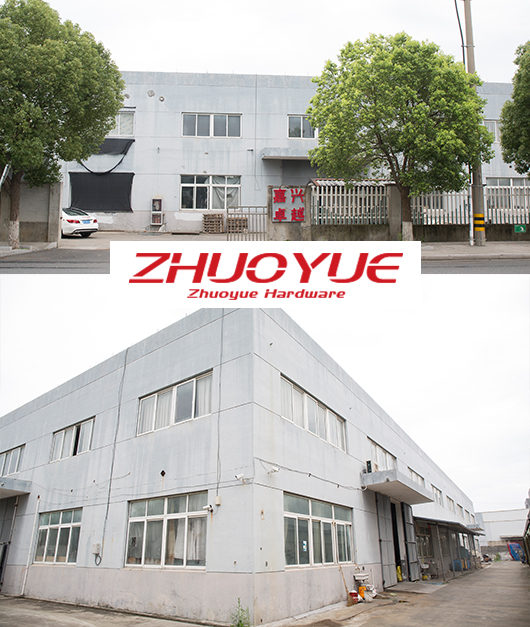Hardware Fitting
Sheet Metal Parts Manufacturers
-
 View More
View More
ZY-13 Wire Storage Box
-
 View More
View More
Hardware Fitting
-
 View More
View More
ZY-11 L-Anchor Bolt
-
 View More
View More
ZY-10 Square Nut
-
 View More
View More
Hardware Fitting
-
 View More
View More
ZY-9 Tools
-
 View More
View More
ZY-8 Latch
-
 View More
View More
ZY-7 Shelf Part
-
 View More
View More
ZY-6 Shelf Part
-
 View More
View More
Hardware Fitting
-
 View More
View More
ZY-5 Caster
-
 View More
View More
ZY-4 Caster

About
Jiaxing Nanhu District Zhuoyue Hardware Factory Is China Sheet Metal Parts Suppliers and China Sheet Metal Parts Manufacturers. Jiaxing Zhuoyue Hardware Company, We are a metal stampings for parts Manufacturer was founded in 2006, main products are various kinds of hardware for power utility and home appliances. The annual capacity for TV bracket exceeds 1,10 0,000 pcs. After having emotional management for over 17 years, we have developed a mature operation team and an experienced technical team to develop samples according to sketch with competitive price and high quality, on-time delivery. Also provide professional advice and solutions.
Customization
We can develop and produce products according to the drawings or samples the customers offered.
Quality & Cost
We have our own production and processing facilities, which are directly sold by manufacturers and offer high-quality and affordable products.
Media & Events
Company News

Hardware accessories are essential tool consumer goods for people's daily lives
Hardware accessories refer to machine parts or components made of hardware, as well as some small ha...
Industry News
-
The horizontal adjustment function of the TV stand: the art of optimizing the viewing experience
In the modern home environment, the TV is the center of family entertainment and information acquisition. Its placement and viewing angle directly affect the qu...
-
Wear resistance: the key to the durability of hardware accessories
In daily life and industrial production, hardware fitting are key components for connection, support or movement, and their performance directly affects the sta...
-
Sheet metal parts: the dual guardians of strength and rigidity
In the vast world of modern manufacturing, sheet metal parts have become an indispensable cornerstone in many product designs with their excellent physical prop...
-
Sheet metal parts: multifunctional guardians in final products
On the vast stage of modern industrial manufacturing, sheet metal parts have become an indispensable part of many final products with their unique advantages an...
Industry Knowledge
How does the selection of appropriate coatings or surface treatments enhance the corrosion resistance and longevity of hardware wire fittings, especially in outdoor or marine applications?
Understanding Relevant Standards and Regulations:
Manufacturers must thoroughly understand the industry-specific standards and regulations that apply to hardware wire fittings. These standards are often set by organizations such as ANSI (American National Standards Institute), ASTM (American Society for Testing and Materials), or ISO (International Organization for Standardization). Regulations may also be enforced by government agencies like OSHA (Occupational Safety and Health Administration).
Design Compliance:
Manufacturers design their hardware wire fittings in accordance with established standards and regulations. This includes specifying dimensions, materials, load capacities, and safety factors to meet or exceed the required criteria.
Material Selection:
Material selection is critical in ensuring compliance with safety standards. Manufacturers choose materials that possess the necessary strength, corrosion resistance, and other properties as specified in the relevant standards. Common materials include stainless steel, carbon steel, and various alloys.
How do industry standards and regulations influence the design and manufacturing of hardware wire fittings, and what steps are manufacturers taking to ensure compliance and safety?
Galvanization:
Process: Galvanization involves applying a layer of zinc to the surface of the hardware wire fitting. This can be done through hot-dip galvanization or electroplating.
Corrosion Resistance: Zinc provides sacrificial protection to the underlying metal. When corrosion begins, it affects the zinc layer first, preventing rust or corrosion from reaching the base metal.
Longevity: Galvanized coatings are highly durable and can significantly extend the life of hardware wire fittings, making them suitable for outdoor and marine use.
Stainless Steel:
Material Choice: Using stainless steel for hardware wire fittings is an effective way to enhance corrosion resistance. Stainless steel contains chromium, which forms a passive oxide layer on the surface, protecting the metal from corrosion.
Corrosion Resistance: Stainless steel fittings are highly resistant to rust and corrosion, even in marine environments where exposure to saltwater is common.
 English
English 中文简体
中文简体









